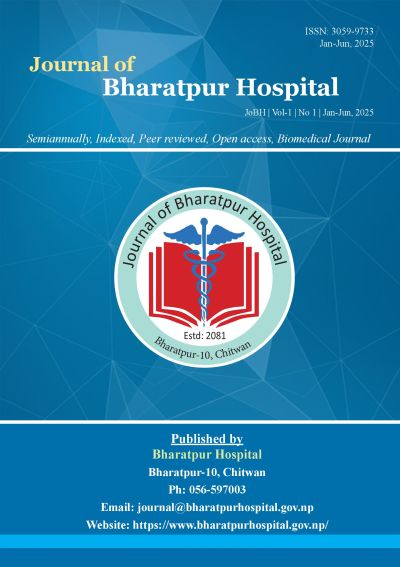WITHDRAWN - Sporadic Variant of Cone-Rod Dystrophy-20
DOI:
https://doi.org/10.3126/jobh.v1i1.78521Keywords:
Cone-rod dystrophy, CRDAbstract
On 20th November 2025 this article was withdrawn on the request of the primary author.
Downloads
Download data is not yet available.
Abstract
145
Published
2025-05-08
How to Cite
Mahato, G. S., & Shrestha, A. (2025). WITHDRAWN - Sporadic Variant of Cone-Rod Dystrophy-20. Journal of Bharatpur Hospital, 1(1), 62–65. https://doi.org/10.3126/jobh.v1i1.78521
Issue
Section
Case Reports
License
Copyright (c) 2025 The Author(s)

This work is licensed under a Creative Commons Attribution-NonCommercial-NoDerivatives 4.0 International License.
This license enables reusers to copy and distribute the material in any medium or format in unadapted form only, for noncommercial purposes only, and only so long as attribution is given to the creator.




